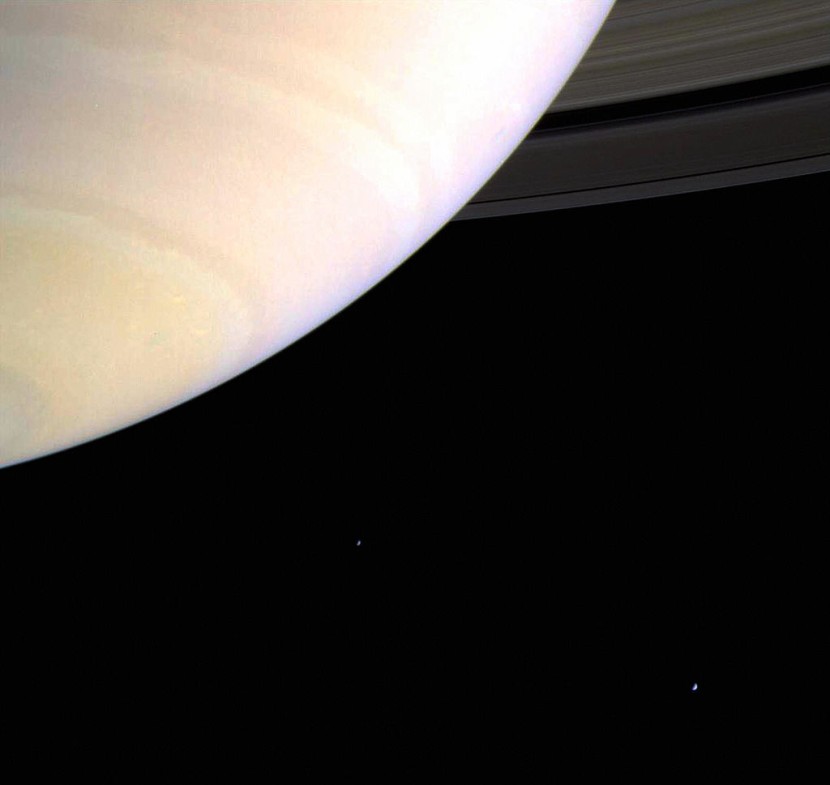
- The James Webb Space Telescope (JWST) detected a massive 6,000-mile-long water plume from one of Saturn's moons.
- The discovery was made on Enceladus, which is known among scientists for its geysers
- Enceladus is known to be home to a sub-surface salty ocean that acts as its primary water source
NASA's James Webb Space Telescope (JWST) detected a massive 6,000-mile-long water plume blasting out from one of Saturn's moons, known as Enceladus.
Enceladus is known for its geysers but the latest discovery is something that scientists consider to be a particularly large one. The water plume was estimated to span roughly 9,600 kilometers, which is a distance that is equal to that of flying from the United Kingdom to Japan.
Saturn's Moon Releases Massive 6,000-Mile-Long Water Plume
The discovery has excited scientists fascinated by Enceladus, whose sub-surface salty ocean is its main water source. Their fascination is mainly due to the moon's ability to hold the basic conditions to support life, as per BBC.
It was NASA's Cassini mission, which was conducted from 2004 to 2017, that gathered sufficient evidence of the necessary chemistry. The mission regularly flew through the geysers of Enceladus and sampled the water using its instruments. However, it made no direct detection of any biology.
The recent discovery by James Webb comes after previous observations that tracked vapor emissions that extended for hundreds of kilometers. However, the sheer size of the newly-found geyser is on a different scale altogether.
Furthermore, the European Space Agency (ESA) calculated that the rate at which the water that was coming out of Enceladus was roughly 300 liters per second. The agency noted that this amount of water is enough to fill an Olympic-sized swimming pool in just a few hours.
Enceladus is described by many scientists as an "ocean world" and is considered by NASA as one of the most compelling places to search for any signs of extraterrestrial life. This particular moon of Saturn is coated in a distinctive, icy outer shell, beneath which lies the saltwater ocean that wraps its rocky core, according to CBS News.
Read Also : UAE Plans to Send Spacecraft to Asteroid Belt
Incredible Discovery
There are cracks on the celestial body's surface, which scientists often call "tiger stripes." They are the ones that allow geyser-like jet streams to spew out from under the ice and into space. These potentially act as a crucial water source for the entire Saturnian system.
The recently detected water plume is particularly interesting to researchers due to its size and strength. While the moon is one of the largest among Saturn's satellites, it's only about 4% of the size of our planet.
In a statement, a scientist at NASA's Goddard Space Flight Center, Geronimo Villanueva, who is also a lead author on the new findings of James Webb, said that the first time he saw the data, he thought they made a mistake.
In a press release, Villanueva added that the finding was just so shocking because of how they detected a water plume roughly 20 times the size of the moon that released it, said Yahoo News.








